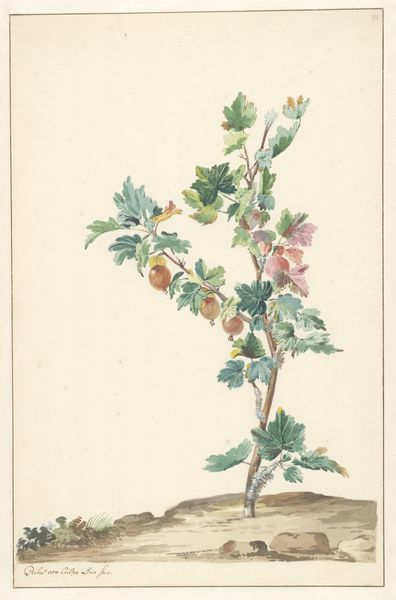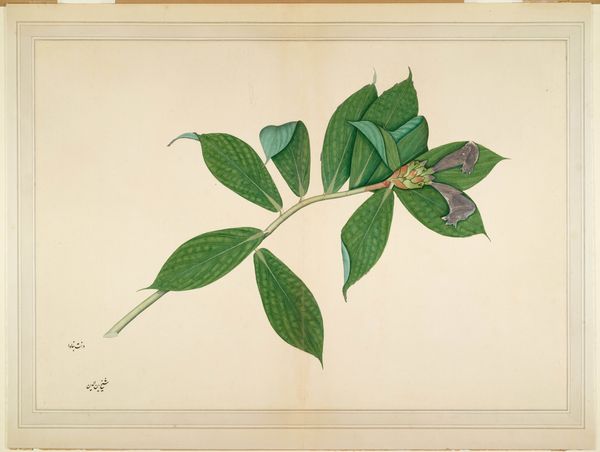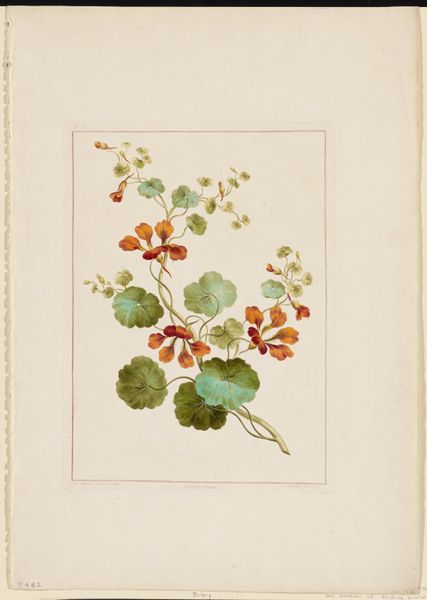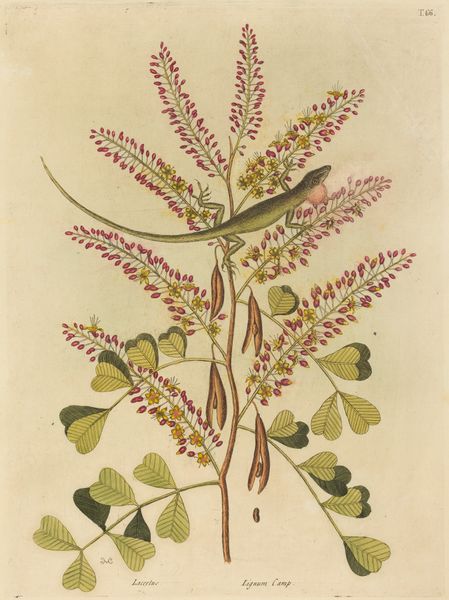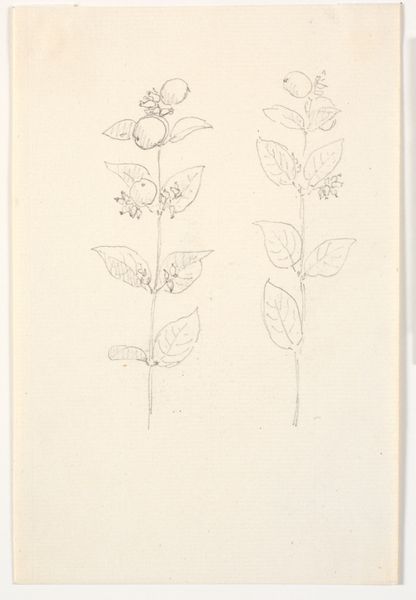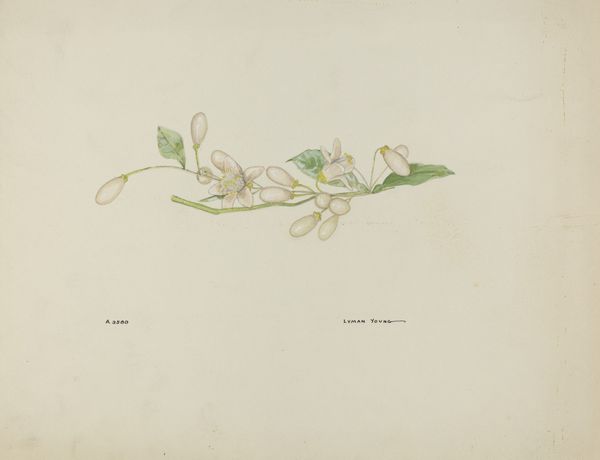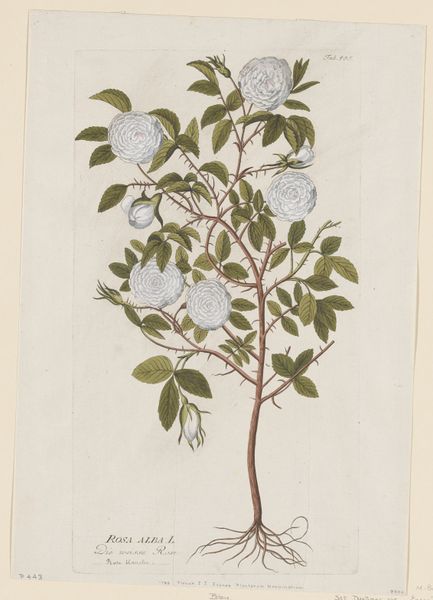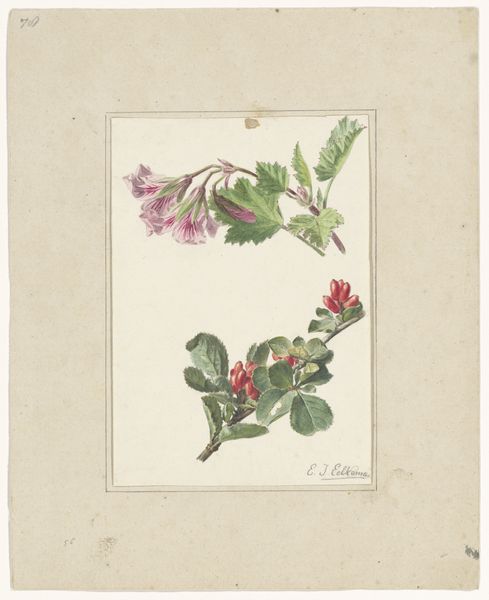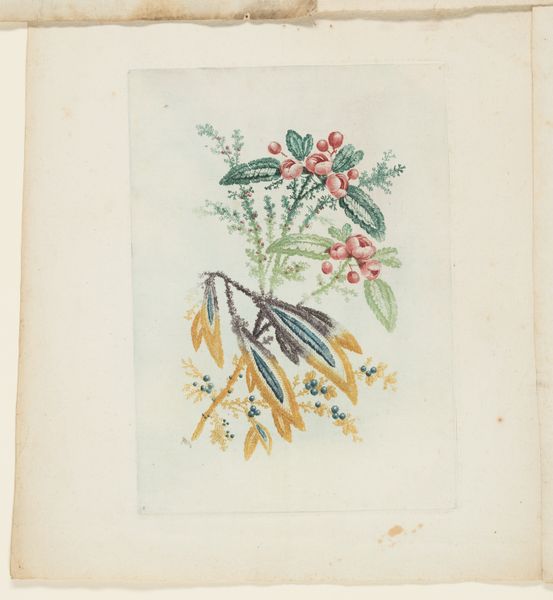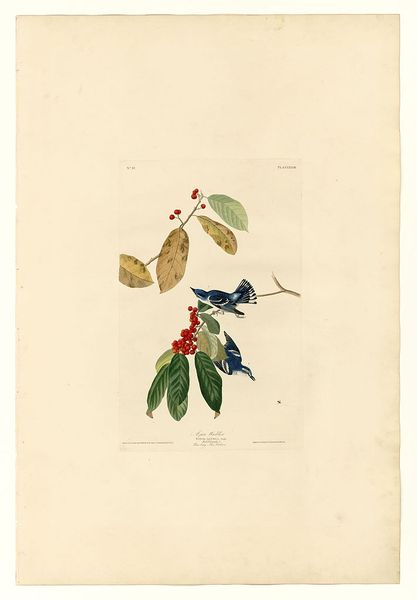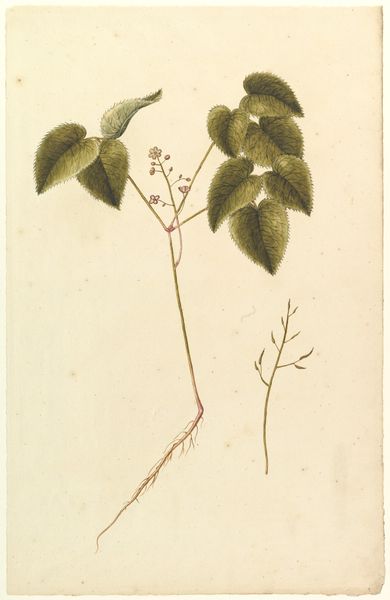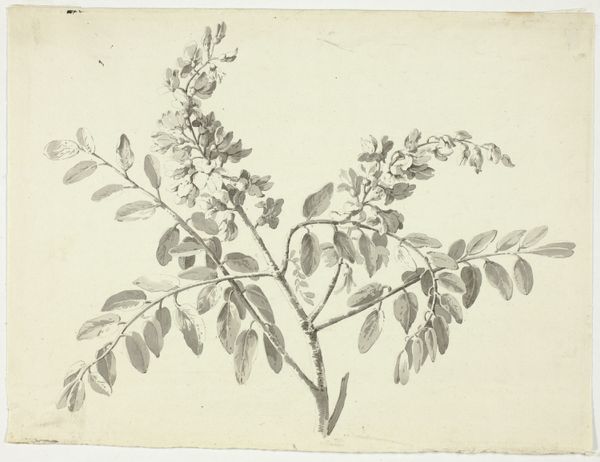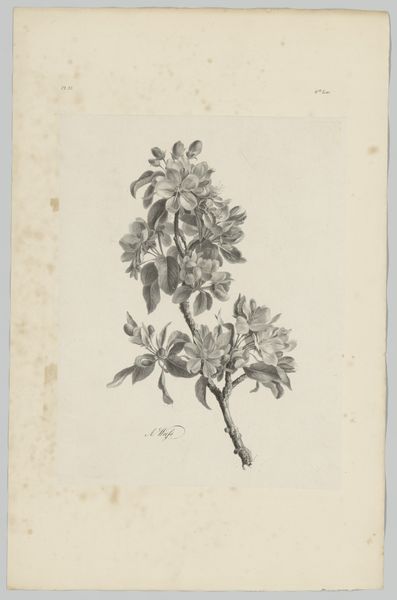
drawing, coloured-pencil
#
drawing
#
coloured-pencil
#
coloured pencil
Dimensions: overall: 26.6 x 35.6 cm (10 1/2 x 14 in.) Original IAD Object: 4 1/4" high; 4" wide
Copyright: National Gallery of Art: CC0 1.0
Curator: Here we have a delicate study, "Silk Petticoat (Fragment)", created around 1939 by Manuel G. Runyan. The piece is rendered in coloured pencil and what strikes me immediately is how ephemeral it feels, like a faded memory. Editor: I agree. There’s a fragile, almost ghostly quality to it. The composition—just two isolated floral motifs against that pale background—enhances that sense of delicate impermanence, doesn’t it? The choice of coloured pencil adds to that feeling. Curator: Absolutely. Considering the period, with the looming war and social upheaval, it makes me wonder about the purpose behind preserving this specific textile design. Was it purely aesthetic, or did it carry deeper, perhaps personal significance within a changing world? Perhaps these types of domestic scenes or attire are slowly changing in social importance. Editor: The flowers themselves—the budding reds, the blooming yellows—they’re incredibly symbolic, speaking to me of burgeoning life, of transient beauty caught just before it fades. Think about how clothing often functions as a repository of memory. Do you believe the colors and plant species featured were deliberate choices, perhaps hinting at something more personal about the individual who owned or desired to own such a petticoat? Curator: Very possibly. It might be an expression of longing for stability or even hope amid turmoil. Fashion and design frequently reflected a collective desire to preserve something precious in response to rapid change. Runyan’s detailed execution also suggests great interest or expertise, raising the possibility that he might have worked in the fashion or textile industries. This can be deduced by his sharp, deliberate application of color and form. Editor: Exactly! The symbolism is powerful. Perhaps the fragility is the point, capturing a fleeting moment of beauty. These colors are deeply sentimental to some, offering feelings of tenderness and reflection upon memories shared through time. The meticulous craftsmanship, though—suggests this fragment also meant something. Curator: Indeed. I wonder how it fits within the broader history of fashion and the politics surrounding domestic crafts during that period. Was this design widely disseminated or something more unique? Either way, this fragment makes us consider history through such small intimate gestures. Editor: It definitely makes one think. Both fragile and carefully considered, this piece, on closer viewing, manages to say a great deal.
Comments
No comments
Be the first to comment and join the conversation on the ultimate creative platform.
